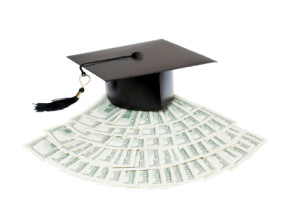 Student loan rates aren’t about to double, despite the headlines.
Student loan rates aren’t about to double, despite the headlines.
Only rates for newly-issued, subsidized federal student loans are set to rise July 1 from 3.4% to 6.8% because Congress couldn’t get its act together to prevent the increase.
Loans that have already been made won’t be affected. Neither will there be an impact on unsubsidized federal student loans, since those already carried a 6.8% rate, or on PLUS loans for graduate students and parents, which have a 7.9% rate.
Subsidized loans traditionally got lower rates because the borrowers have demonstrated financial need. But subsidized loans also charge no interest:
- while the student is still in school at least half time
- for the first six months after the student leaves school and
- during an approved postponement of loan payments.
Those are powerful advantages not available on unsubsidized loans, which is what you get when you can’t demonstrate financial need.
College expert Lynn O’Shaughnessy points out in her MoneyWatch column that the doubling of subsidized loan rates actually won’t have an outsized impact:
The hike will mean that a borrower will spend less than $7 a month repaying that extra interest, according to Mark Kantrowitz, the publisher of Edvisors Network and a national financial-aid expert. Keeping the subsidized rate at 3.4 percent would cost the government $41 billion over 10 years, which is a high price to pay to save borrowers a few dollars a month.
Kantrowitz has said it’s unlikely that higher interest rates would dissuade many from attending college, and he would rather see the money go toward increasing Pell grants for the neediest students, which would do a lot more to encourage them to get a degree. Here’s what he had to say in a New York Times op-ed piece co-authored with O’Shaughnessy:
But the partisan posturing is a distraction from far more pressing issues that face students and parents who must borrow to cover their college costs. What’s lost is how Congress, in numerous ways, has been hurting the most vulnerable college students and dithering on the crisis of college affordability….Congress has starved the Pell grant program, an educational lifeline for low-income families.
He goes on to question why most student loan rates are so much higher than the government’s cost, something that’s turned education debt into a profit center for Uncle Sam. Congress also hasn’t done anything about the suffocating student loan debt many graduates have already taken on or the continuing (if somewhat moderated) increase in education costs. Private student loans remain especially problematic, since they lack the consumer protections of federal student loans and many lenders have been unwilling to work with borrowers to create affordable repayment plans. I’ve argued that we should give bankruptcy judges the power to modify private student loan terms as a way of forcing lenders to play ball.
Nobody wants to pay more interest, but there are bigger problems with the way we pay for higher education than a hike in the subsidized student loan rate.
[…] read that student loan rates doubled on Monday, but that’s not quite true. Read “Student loan rates: Facts amid the fictions” for the straight […]